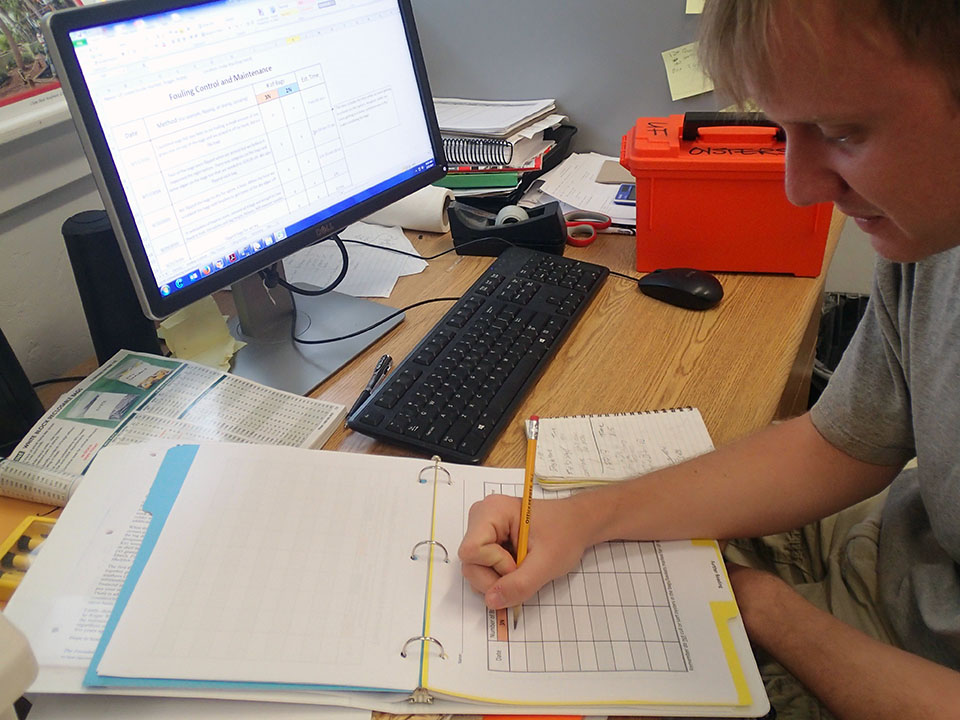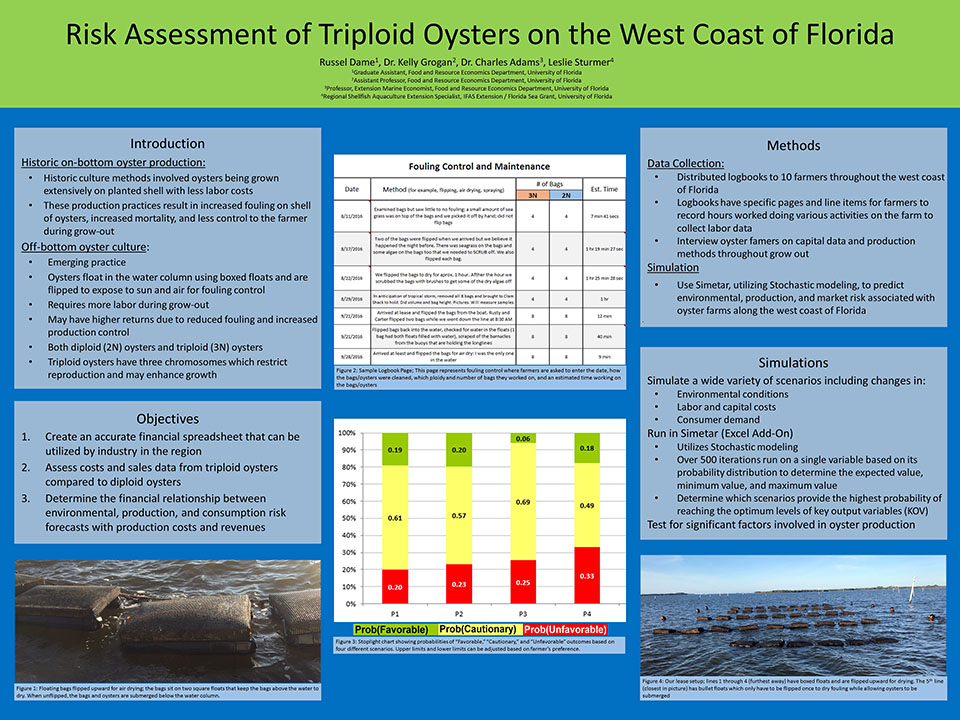Another component of the Oyster Culture Demonstration Project is to document economic costs and benefits associated with diploid versus triploid oyster production along the west coast of Florida. To help collect cost and sales data, UF economists and a graduate student have partnered with oyster farmers to provide “real-world” estimates allowing for a better understanding of production methods, operational costs, and farm-gate revenues associated with growing the two ploidy types. Findings will be transferred into a financial spreadsheet that the user can adjust based on their unique farming and investment situation (e.g., farm size, # seed planted). To make this spreadsheet as accurate as possible, estimates for labor and capital are being obtained from participating farms. An analysis of various environmental, production, and consumer risks that affect oyster farms will be conducted using Stochastic modeling via the Simetar software package. The resulting information will be added to the financial spreadsheet, allowing potential oyster farmers a realistic view into the industry and the risks they will likely confront.
To collect cost and sales data, oyster farmers from Alligator Harbor to Charlotte Harbor were each given a logbook along with triploid and diploid oyster seed. The logbook has labor time spent working on the farm broken down into six different categories or culture activities as follows: Planting, Fouling Control, Bag Transfer, Culling/Sorting, Harvesting, and Miscellaneous. Each section allows UF researchers to track the time worked on specific tasks and associate a wage to accurately estimate labor costs. Farmers will be interviewed once growout is complete to gather capital and operating costs, along with additional information associated with labor to get an accurate perspective of production. The farmers will also provide sales data for both ploidy types, allowing comparison of farm-gate prices and production differences.
The environmental, production, and market risks that may occur along Florida’s west coast will be analyzed using Simetar, an Excel Add-On which utilizes repeated random simulation to predict effects on key output variables. Using Simetar, scenarios will be created that will estimate worst case and best case outcomes while showing the expected values for each output variable along with different levels of risk associated with each scenario. Analyzing different types of environmental risk, such as hurricane force winds, heavy rainfalls, and drought years, Simetar will estimate how oyster prices and production may adjust in response to the environmental situation. Based on numerous variables, such as historical prices, adjustments in production quantities and methods, and other significant factors, prices can be forecasted allowing adjustment of costs to optimum levels in response to the changing market. Finally, various consumer risks will be assessed, such as an increase or decrease in demand for oysters, based on adjustments in marketing costs and future adjustments in consumer knowledge. This will provide oyster farmers a realistic view of the industry and potential benefits of culturing triploid versus diploid oysters.

Rusty Dame, a graduate student in the UF/IFAS Food and Resource Economics Department, is entering time associated with culture activities in a logbook he helped develop to document labor requirements. Rusty will assess economic costs and benefits associated with oyster production and analyze various risk factors for his master’s thesis.
Click on image above to view poster (pdf file) on Risk Assessment of Triploid Oysters presented at the Big Bend Science Symposium in January 2017.


